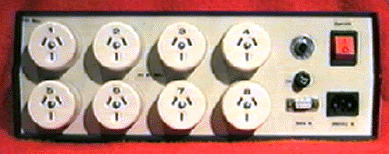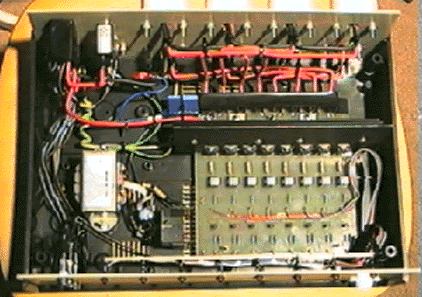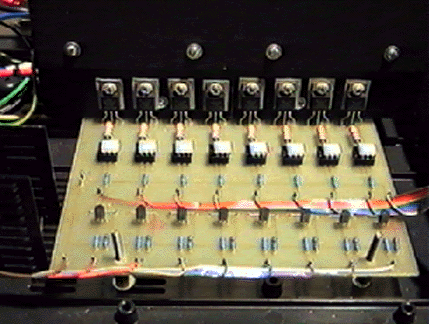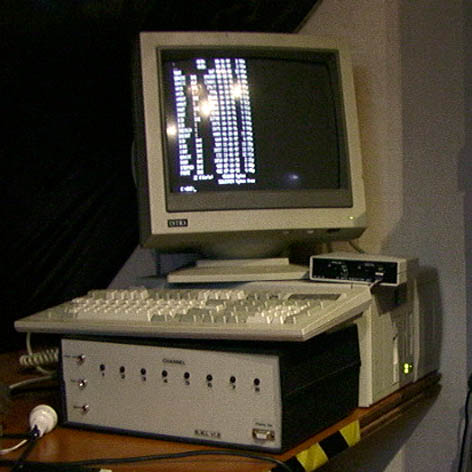
It doesn't take long to realise that having a computer that can interact with the real world makes things much more interesting.
Humble begginings were with the BBC Microcomputers, Vic 20s and more thanks to my early years with the SPICE (later known as PEAC) higher learning service. This and some of the great Osborne Books (in particular "How to Make Computer Controlled Robots") were early beginnings...

Alot of fun has been had with a C64, thats right! A crappy old commodore 64. The most obvious thing about the machine is the fact that it has a "user port" which is basically a 8 channel I/O port.
For inside out details on the C64 and is user port check out http://www.cantrememberthissite.com

Aside from a few bits of tag strip, this was the first real interface for my C64. It began as a simple way to illustrate the state of the user port and wound been used to control stepper motors, relays nad a whole lot more.
My other early interface was a temperature controller for my homebrew.

Consisting of little else than a thermister (taped to the side of the brewing vessel) and a relay to switch the mains powered "brew belt" the system kept my special brews within a fraction of a degree throughout the cooler months.
Soon requirements became bigger. An 8 channel output interface was rigged up based around triacs switched by the MOC3041 zero crossing (for minimal interference) opto-isolator. Featuring 8 fused mains outlets and a front panel status display the unit was destined for service in all sorts of projects : lighting shows, display switching and more.

FRONT : Neon display (Power Available, Fuse OK, Operating) 8 LED channel status indicators, D connector for external display.

REAR : 8 x 250VAC sockets, main breaker, low voltage fuse, data in, power switch, IEC mains input

INSIDE : Things inside are a little more busy. A single PCB contains the computer signal switching transistors, opto isolators and triacs (on heatsink.)
The transformer supplies the 5V for all TTL logic and LED display.

DETAIL of MAIN PCB
It is bit of a shame I don't have some of the pictures taken of parties I have set up and run just with this simple device and a few hundred lines of good old C64 BASIC. The effect is HUGE. If I dig some up I'll paste them in.
THINGS GET BIGGER
The C64 (and 128) were still a bugger of a machine to work with. Small RAM, slow speed, constant breakdowns and other problems meant the development path was limited.
Soon enough I upgraded to the PC platform (only a 486) and purchased the Data Aquisition Unit from Oatley Electronics.

With some mofication to the 8 channel output driver the DAQU was quickly coupled and QBASIC on the 486 was the next instruction path.

The PC is also used to control a LED Moving Message Display which I shall include more on on a later date.
UPDATE : These days I'm using boards from Weeder Technologies , X-10 modules, the ZephIR and a few other bits and pieces (there's more of this under the projects section of "about me.")
Disclaimer : Although all care has been taken in the production of these articles I cannot be held responsible for any equipment construction / modification or use of data contained here in any way, shape or form. Sole responsibility lies with the constructor.